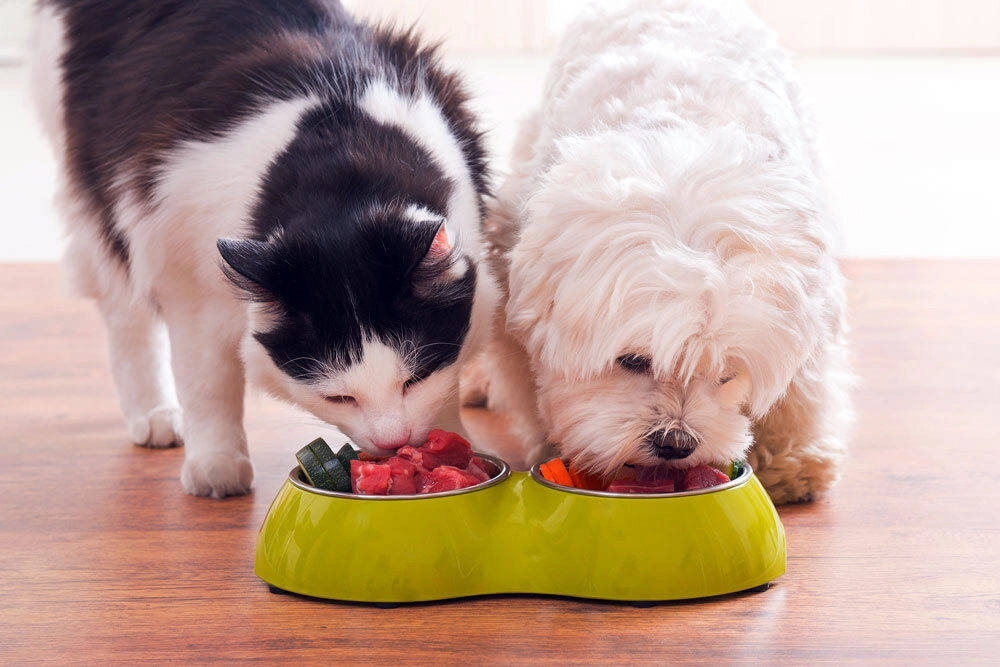
Choosing between wet food (canned or pouches) and dry food (kibble) is one of the most fundamental decisions a pet parent makes. There is no single "best" answer, as the optimal choice depends heavily on your pet’s species, age, health status, and even their preferences—a personalized approach that echoes the importance of tailored nutrition we've discussed before.
Both formats offer complete and balanced nutrition, but they differ significantly in their moisture content, which fundamentally changes everything from caloric intake to dental effects. Dry kibble contains only 6–10% water, while wet food contains a high 70–85% water. This is the core distinction that drives all other differences.

Dry food is the most popular choice globally due to its convenience, cost-effectiveness, and stability.
Key Advantages: Cost, Convenience, and Teeth

Kibble is significantly less expensive per serving and is easy to store. It can be safely left in a bowl for free-feeding, which is convenient for busy schedules. Beyond convenience, the hard, crunchy texture of kibble can provide a mechanical scraping action that helps remove some plaque and tartar from the surface of teeth. This supportive dental health benefit makes dry food a valuable part of the diet for many Adult Pets. Finally, its high calorie density makes it easy to precisely measure and manage portions, which is crucial for strict weight management plans.
Key Drawbacks: Hydration and Carbohydrates
The primary drawback is the low water intake. Pets eating only dry food must rely entirely on their water bowl. This can be a significant concern, especially for Cats and Senior Pets who naturally have a lower thirst drive, as maximum hydration is critical for urinary tract and kidney health. Additionally, kibble requires starch (a carbohydrate) to hold its shape, often resulting in a higher carbohydrate content compared to wet food.

Wet food often mimics the natural, moisture-rich diet of a carnivore more closely due to its composition, which is typically higher in meat-based protein and lower in carbohydrates than kibble.
Key Advantages: Hydration and Appetite
The high moisture content is the number one benefit of wet food. Adequate hydration is vital for all pets but particularly critical for Cats to support urinary tract health and for Senior Pets to support aging kidney function. Furthermore, wet food is richer in aroma and flavor, making it highly palatable. This makes it the best choice for Picky Eaters and Senior Pets whose senses of smell and taste may be diminished. Finally, because wet food is mostly water, it has a low calorie density. This means a pet can eat a larger volume for the same number of calories, increasing satiety and making it an excellent tool for weight loss.
Key Drawbacks: Dental and Cost
Wet food offers no mechanical scraping action and can leave more residue on the teeth, potentially accelerating the risk of dental disease if teeth are not regularly brushed or managed. It is also generally more expensive and cannot be left out for long periods, requiring scheduled feedings.

The "best" choice is often a strategic approach that combines the benefits of both:
· For Cats: Wet food is often highly recommended to ensure they receive essential hydration, supporting their low thirst drive and critical urinary health.
· For Senior Pets: Wet food is often preferred because it is easier to chew, highly appealing to a diminished appetite, and supports hydration for kidney and joint health.
· The Mixed Approach (The "Topper"): Many veterinarians recommend a combination diet—feeding dry kibble for its dental benefits and cost, but using wet food as a small topper or as a dedicated portion of the meal to ensure optimal hydration and enhance palatability.
When introducing any change, remember the principle of Observation. Monitor your pet's weight, stool quality, and overall energy level to confirm the new diet format is supporting their lifelong vitality.
References (DOI)
1. Muller C. The role of nutrient analysis in the development of pet food. J Food Compos Anal. 2013;30(1):1-6.
2. Morris JG. Why cats require special dietary consideration. Nutr Res Rev. 2002;15(2):197-208.